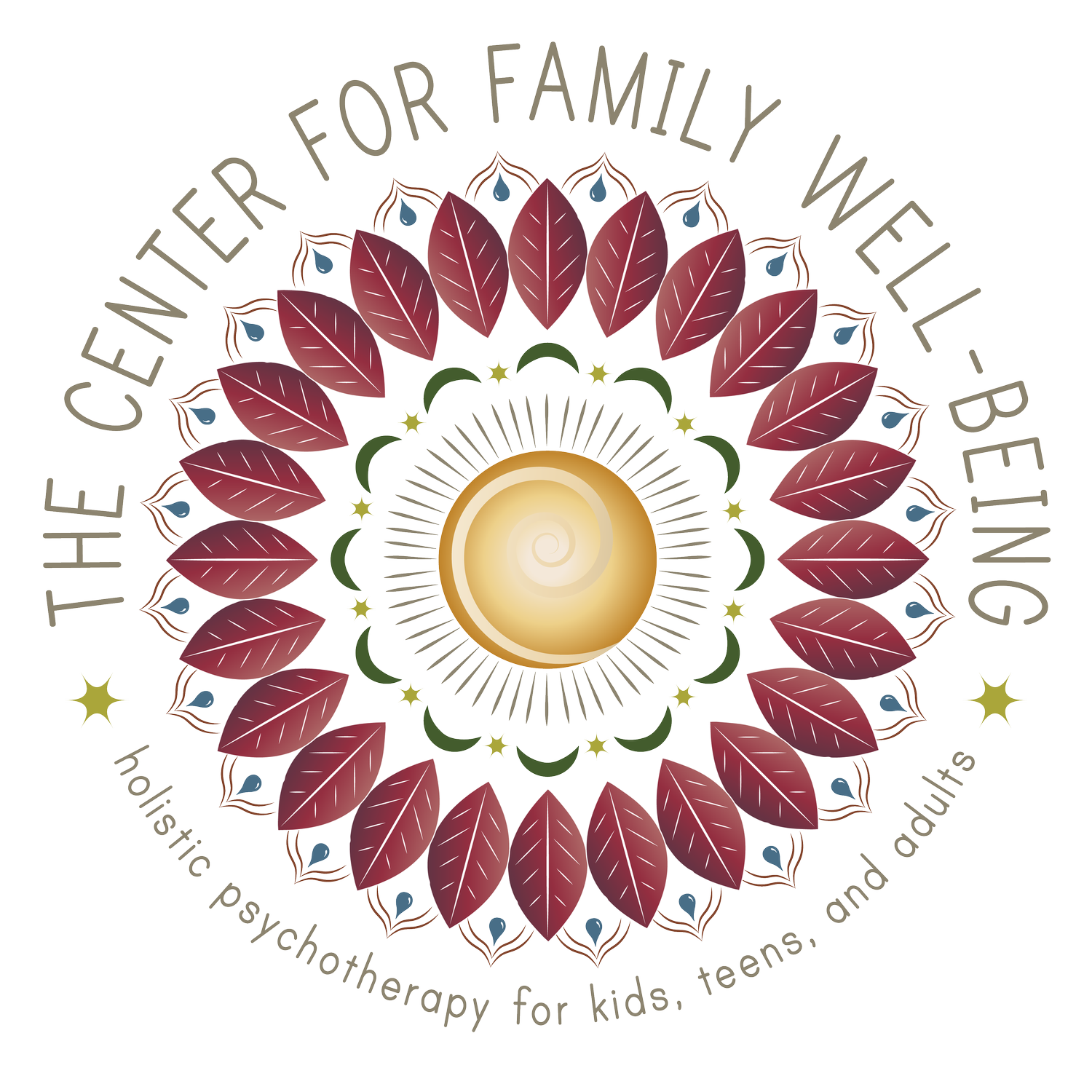Spring 2025: Resources We Love
Change is all around us this spring — sometimes welcome, sometimes challenging. At the Center, we’re happy to share the resources that have been especially helpful to our team as we navigate the new season, both as individuals and therapists.
Whether you’re seeking quick tips, thought-provoking reads, inspiring meditations, or something else entirely, we hope you find something here that helps you grow and bloom. And if you’re seeking additional support or connection this spring, remember that the Center is always here as a resource for healing and community. Let’s make this spring one of compassion, closeness, and well-being!
Stephanie Brown
Two things that are inspiring me are Anam Cara: A Book of Celtic Wisdom by John O'Donohue and free flow writing.
I recently finished Anam Cara for the first time and have already decided to re-read it. It's been a welcome companion during these cold winter months and helped me feel just a bit warmer and lighter.
One of my wonderful colleagues, Aryn Davis, shared Sarah Blondin's guided meditation, Flow Writing, and it's now a practice I incorporate in my routine. I deeply appreciate the experience of allowing for the critical mind to take a rest and just let whatever comes up come up.
Aryn Davis
Using a timer for children and adolescents (and adults, too!), can be a great way to support task completion. This Mooas timer is my personal favorite — I actually use it myself and rarely leave for work without it!
Timers help to break up large or longer tasks into smaller, more manageable chunks. You can use a timer to chunk tasks like cleaning the bedroom, completing homework for the evening, or to stay on track during your morning routine. Here are a few age-appropriate models:
Twist Timer for Kids - a digital timer with disk that disappears
Visual Timer for Kids - an analog timer with disk that disappears
Elizabeth Ebaugh
Grow A New Body and Grow A New Brain, both by Alberto Villoldo
Alberto has been sharing his shamanic teachings for many years. Several years ago he fell quite ill, which led him to some deep research into healing the physical body through diet, supplements, and Ketosis. His cookbook, Grow A New Body, is a great resource. I also recommend his most recent publication, Grow A New Brain, which offers cutting-edge information about diet and supplements for the brain. Both are available on audio or in print.
Dania Fawaz
Lately, I've been relying on a resource that supports my daily mindfulness practice. Insight Timer offers free guided meditations, mindfulness practices, and thoughtful talks that give me a much-needed break from the busyness of everyday life – even when I only have a few minutes to spare. It's quickly become my go-to for reconnecting with myself, and I really recommend giving it a try.
Liz Hagerman
This spring, go out and open your senses to nature! So much is happening: You can hear the chirping birds, see the new growth and blooming flowers, and even notice how the smell and feel of the air on your skin has changed. Nature and sensory awareness are two very real antidotes to the chaos, disruption, and loss in our current national and international situation.
Another spring resource is the annual Screen Free Week, which takes place the first week in May. This global event encourages us to take a break from screen-based entertainment (and I will add, possibly the news!) and experience more peace, connection, and fun — and possibly change your family’s relationship with screens.
As the site explains, participation is easy and open to anyone: Simply choose the platforms, apps, or devices that are most problematic for you or your family, set a goal (take an hour off, a day, or the whole week!), and enjoy the free time that opens! And if you’re looking for tips on screen-free activities, the website has lots of helpful and fun resources, like Screen Free Bingo.
Kate Kelly
The Stress Prescription: 7 Days to More Joy and Ease, by Dr. Elissa Epel
In meeting the intensity of the moment, this book feels especially timely for me. With compassion, heart, and a strong scientific mind that includes 30 years of research studying stress and the stress response, Dr. Epel condenses her work into this small volume. Each chapter offers clear applications directly from her years of research to help us grow our stress resilience and let go of chronic or toxic stress in the body, mind, and heart. This small volume is not about simply relaxing or taking a deep breath; it helps us transform stress directly as we learn to face it and move through it. I especially appreciated Dr. Epel’s chapters on embracing uncertainty, letting go of what we can’t control while also adding what matters most, reaffirming our values, and recalling resources on our journey towards resilience. While this book is written primarily for adults, there is a lot here that can be translated to support kids and teens as well.
Liz Liptak
Finding Moments of Awe
In January, I visited the Grand Canyon and the majestic red rocks and dark night sky in Sedona, Arizona. These experiences evoked feelings of awe and reminded me of a book on my to-read list: Awe: The New Science of Everyday Wonder and How It Can Transform Your Life. The author, Dacher Keltner, is a professor of psychology at the University of California, Berkeley, who teaches a popular online course on the science of happiness and is known for his research on the science of emotion.
Keltner defines awe as the emotion we feel in the presence of something vast, mysterious, and greater than ourselves. In the book, he covers research on how the presence of awe stimulates our parasympathetic nervous system: the “rest and digest” versus “fight or flight.” While viewing the Grand Canyon certainly elicits the emotion of awe, Keltner says we can cultivate and experience “everyday awe” through music, nature, visual design, and spiritual or meditative practices. Just a few minutes of noticing something like an expansive sky or a blossoming tree can reset our brain and nervous system. Where can you find a sense of awe today?
Lisa Oakley
While there’s no shortage of concerns about the future, it’s worth taking a closer look at the habits we’re helping kids form — especially around technology. I want to share a book that was recommended to me by a client: The Anxious Generation, by Jonathan Haidt.
This book sheds light on the impact that smartphones and social media have had on teen development and mental health. He delves into the research on this topic and shares that between 2010 and 2020 the prevalence of anxiety in adolescents increased by 134% and depression by 106%. Haidt dubs the period between 2010 and 2015 "The Great Rewiring of Childhood" because it was during this time that many teens traded their flip phones for smart phones, and social media platforms became easily accessible with the advent of unlimited data plans. He argues that these changes fundamentally shifted how this generation spends their free time and interacts with one another.
Those of us who work with kids, teens, and parents raising teenagers see these impacts firsthand. We've seen a shift from play-based childhoods to phone-based childhoods, and it has taken a significant toll.
For some teens, phones supplement their in-person relationships and can act as a catalyst for social engagement — especially if parents are able to oversee and monitor their use. But for so many others, smartphones and social media can become a major source of stress, overwhelm, and inertia.
The good news is that positive change is possible. Creating good habits around phone use can start at a young age. The author lays out many recommendations for parents and educators. Suggestions include limiting and restricting phone use; increasing routines around in-person connections; and valuing physical activity. It’s definitely worth a read!
Amy Murphy
During this time when it feels like everything around me is literally shifting, changing, and uncertain, I have been lucky enough to find the meditations of Sarah Blondin.
Blondin is an author and meditation guide who offers many of her resources at no charge. She presents concepts in a very accessible way, and I find her words and delivery soft, thoughtful, and comforting. Taking time in my day to pause and listen to Blondin's meditations has helped me regulate and center myself while the world swirls around me.
In addition to Apple and Spotify, you can also find Blondin’s meditations on the free app Insight Timer, which I highly recommend. My colleague Aryn Davis introduced me to this incredible app, which is filled with guided meditations, music, talks, a meditation timer (complete with background music and bell sounds), as well as helpful ways to track your progress. Blondin’s meditations on Insight Timer span from 2016 until now, so there are dozens of her tracks, workshops, and courses to choose from.
Here are two of my favorites:



